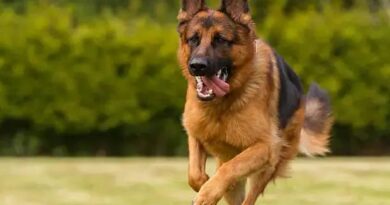What is goal setting for dog training
Understanding Goal Setting in Dog Training
Setting goals in dog training is a fundamental aspect that helps both trainers and pet owners achieve desired behaviors and skills in their dogs. By defining clear objectives, trainers can create structured training sessions that focus on specific outcomes, making the process more efficient and effective. This approach not only enhances the learning experience for the dog but also fosters a stronger bond between the dog and its owner.
The Importance of SMART Goals
One effective method for goal setting in dog training is the SMART criteria, which stands for Specific, Measurable, Achievable, Relevant, and Time-bound. By applying these principles, trainers can outline precise goals that are realistic and attainable within a set timeframe. For instance, instead of a vague goal like “teach my dog to sit,” a SMART goal would be “teach my dog to sit on command within two weeks, using positive reinforcement techniques.”
Breaking Down Training Goals
When setting goals for dog training, it’s essential to break them down into smaller, manageable tasks. This approach allows for gradual progress and helps prevent frustration for both the trainer and the dog. For example, if the ultimate goal is to have the dog perform off-leash obedience, initial goals might include mastering basic commands on a leash, followed by practicing in a controlled environment before transitioning to off-leash scenarios.
Tracking Progress and Adjusting Goals
Monitoring progress is a crucial part of the goal-setting process in dog training. Keeping a training journal or using apps designed for pet training can help trainers track their dog’s achievements and setbacks. If a particular goal is not being met, it may be necessary to reassess and adjust the goal or the training methods being used. Flexibility in goal setting ensures that the training remains effective and enjoyable for the dog.
Incorporating Positive Reinforcement
Positive reinforcement plays a vital role in achieving training goals. By rewarding desired behaviors with treats, praise, or playtime, trainers can motivate their dogs to learn and retain new skills. Setting goals that incorporate positive reinforcement strategies not only enhances the training experience but also builds the dog’s confidence and eagerness to participate in future training sessions.
Setting Realistic Expectations
It’s important to set realistic expectations when it comes to dog training goals. Every dog is unique, with different temperaments, learning speeds, and previous experiences. Understanding these individual differences allows trainers to set appropriate goals that align with the dog’s capabilities. For instance, a young puppy may require more time to learn basic commands compared to an older dog with prior training experience.
Creating a Training Schedule
Establishing a consistent training schedule is essential for achieving goals in dog training. Regular practice helps reinforce learned behaviors and ensures that the dog remains engaged and focused. Trainers should aim to incorporate short, frequent training sessions into their daily routine, allowing for repetition and reinforcement of skills while keeping the sessions fun and stimulating for the dog.
Engaging with Professional Trainers
For those new to dog training or facing challenges in achieving their goals, seeking the assistance of professional trainers can be beneficial. Professional trainers can provide valuable insights, tailored training plans, and support in setting realistic goals. They can also help identify any underlying behavioral issues that may be hindering progress, ensuring a more effective training experience.
Celebrating Achievements
Celebrating milestones and achievements in dog training is crucial for maintaining motivation for both the trainer and the dog. Recognizing progress, no matter how small, reinforces the positive aspects of training and encourages continued effort. Whether it’s a special treat, a fun outing, or simply a moment of praise, celebrating achievements fosters a positive training environment and strengthens the bond between the dog and its owner.


